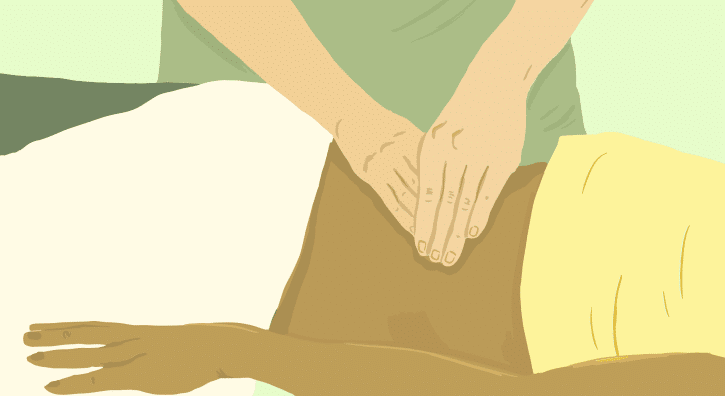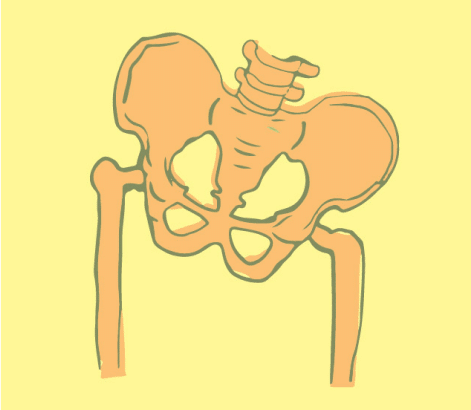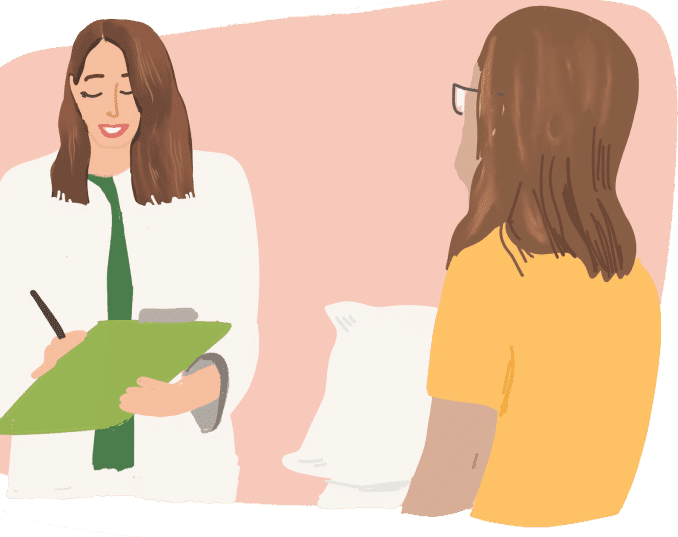

Sexual dysfunction isn’t just a physical concern—it’s an emotional and relational one too. Individuals facing persistent issues such as decreased libido, problems with arousal or orgasm, or pain during sex often struggle to find clear answers. A commonly missed piece of the puzzle is the pelvic floor, a group of muscles deeply tied to sexual performance and pleasure. These muscles are responsible for actions like supporting male erections and producing the contractions that accompany orgasm for all people. However, if these muscles are weak, overly tight, or not functioning in harmony, they can cause painful sensations, blunted pleasure, or general sexual dissatisfaction. This disruption often leads to psychological strain as well. Fortunately, pelvic floor physical and occupational therapy can help. Through a personalized, evidence-based treatment plan, individuals can improve muscle function and rebuild both confidence and comfort in their intimate lives.
The Facts
- One in three women who haven’t yet entered menopause will face some form of sexual discomfort, though many never receive proper care or attention for it.
- Between 15% and 72% of men under the age of 40 experience erectile dysfunction, showing that this issue frequently arises earlier than most assume.
- Roughly 52% of men between 40 and 70 encounter issues with erection quality, often resulting in diminished confidence and stress within intimate relationships.
- After prostate surgery, it’s not uncommon for men to report a steep decline in erectile capabilities—with up to 80% noticing such changes.
- For menopausal women, nearly 60% feel too embarrassed to bring up sexual pain with their physicians, meaning they may continue to suffer in silence.
- Drugs like hormonal birth control and common acne prescriptions are linked to vaginal dryness and increased sensitivity, leading to discomfort during intimacy.
- About 65% of women still experience pain during intercourse up to 18 months after giving birth—illustrating how postpartum recovery extends far beyond the early weeks.
Sexual dysfunction isn’t just a physical concern—it’s an emotional and relational one too. Individuals facing persistent issues such as decreased libido, problems with arousal or orgasm, or pain during sex often struggle to find clear answers. A commonly missed piece of the puzzle is the pelvic floor, a group of muscles deeply tied to sexual performance and pleasure. These muscles are responsible for actions like supporting male erections and producing the contractions that accompany orgasm for all people. However, if these muscles are weak, overly tight, or not functioning in harmony, they can cause painful sensations, blunted pleasure, or general sexual dissatisfaction. This disruption often leads to psychological strain as well. Fortunately, pelvic floor physical and occupational therapy can help. Through a personalized, evidence-based treatment plan, individuals can improve muscle function and rebuild both confidence and comfort in their intimate lives.
The Facts
- One in three women who haven’t yet entered menopause will face some form of sexual discomfort, though many never receive proper care or attention for it.
- Between 15% and 72% of men under the age of 40 experience erectile dysfunction, showing that this issue frequently arises earlier than most assume.
- Roughly 52% of men between 40 and 70 encounter issues with erection quality, often resulting in diminished confidence and stress within intimate relationships.
- After prostate surgery, it’s not uncommon for men to report a steep decline in erectile capabilities—with up to 80% noticing such changes.
- For menopausal women, nearly 60% feel too embarrassed to bring up sexual pain with their physicians, meaning they may continue to suffer in silence.
- Drugs like hormonal birth control and common acne prescriptions are linked to vaginal dryness and increased sensitivity, leading to discomfort during intimacy.
- About 65% of women still experience pain during intercourse up to 18 months after giving birth—illustrating how postpartum recovery extends far beyond the early weeks.
Symptoms
*Sexual Dysfunction in people with a penis
- Erectile issues include difficulty obtaining or keeping an erection long enough for satisfactory intimacy.
- A weaker ejaculatory response—either in strength or presence—can be troubling for many.
- Some experience urinary leakage at orgasm, a phenomenon known as climacturia.
- Discomfort post-ejaculation may arise in areas such as the penis, scrotum, or perineum.
- Abnormal skin discoloration or blotchiness around the groin or genital region could accompany other symptoms.
Postpartum Sexual Dysfunction
- Breastfeeding affects hormone levels, often leaving the vaginal tissues less lubricated.
- Injuries sustained during childbirth may cause perineal pain that extends into sex.
- Orgasmic sensations may be harder to achieve or feel different after birth.
- Urine loss during sexual contact or orgasm is a concern for many new mothers.
- Lingering sexual pain is a common but overlooked postpartum issue.
*Sexual Dysfunction in people with vulvas/vaginas
- Insufficient lubrication may cause chafing, irritation, or a sense of dryness during arousal.
- Some individuals feel pain during penetration—whether shallow, deep, or throughout.
- The clitoris may become overly reactive, where touch causes pain instead of pleasure.
- A burning feeling or soreness can appear after intimacy and may disrupt rest or sleep.
- The sensation of orgasm might feel dulled, less satisfying, or entirely absent.
- Leakage of urine during intimacy can point to underlying pelvic instability.
- When urination occurs at climax, it may require specialized pelvic assessment.
Menopausal Sexual Dysfunction and Post-gynecologic cancer treatment
- Vaginal dryness caused by lower hormone levels interferes with comfort and pleasure.
- Penetration may be painful or impossible due to vaginal tissue thinning.
- Sex-related discomfort may continue after activity, creating long-term unease.
- Climax may feel blunted or go entirely missing due to hormonal or nerve changes.
Symptoms
*Sexual Dysfunction in people with a penis
- Erectile issues include difficulty obtaining or keeping an erection long enough for satisfactory intimacy.
- A weaker ejaculatory response—either in strength or presence—can be troubling for many.
- Some experience urinary leakage at orgasm, a phenomenon known as climacturia.
- Discomfort post-ejaculation may arise in areas such as the penis, scrotum, or perineum.
- Abnormal skin discoloration or blotchiness around the groin or genital region could accompany other symptoms.
*Sexual Dysfunction in people with vulvas/vaginas
- Insufficient lubrication may cause chafing, irritation, or a sense of dryness during arousal.
- Some individuals feel pain during penetration—whether shallow, deep, or throughout.
- The clitoris may become overly reactive, where touch causes pain instead of pleasure.
- A burning feeling or soreness can appear after intimacy and may disrupt rest or sleep.
- The sensation of orgasm might feel dulled, less satisfying, or entirely absent.
- Leakage of urine during intimacy can point to underlying pelvic instability.
- When urination occurs at climax, it may require specialized pelvic assessment.
Postpartum Sexual Dysfunction
- Breastfeeding affects hormone levels, often leaving the vaginal tissues less lubricated.
- Injuries sustained during childbirth may cause perineal pain that extends into sex.
- Orgasmic sensations may be harder to achieve or feel different after birth.
- Urine loss during sexual contact or orgasm is a concern for many new mothers.
- Lingering sexual pain is a common but overlooked postpartum issue.
Menopausal Sexual Dysfunction and Post-gynecologic cancer treatment
- Vaginal dryness caused by lower hormone levels interferes with comfort and pleasure.
- Penetration may be painful or impossible due to vaginal tissue thinning.
- Sex-related discomfort may continue after activity, creating long-term unease.
- Climax may feel blunted or go entirely missing due to hormonal or nerve changes.
Associated Diagnoses
Diagnoses such as Endometriosis, Vulvodynia, Interstitial Cystitis/Painful Bladder Syndrome, Pudendal Neuralgia, Chronic Pelvic Pain Syndrome/Male Pelvic Pain, Lichen Sclerosus, Lichen Planus, Pelvic Floor Dysfunction, post-prostatectomy complications, and Genitourinary Syndrome of Menopause are all associated with sexual dysfunction and pelvic pain.

Associated Diagnoses
Diagnoses such as Endometriosis, Vulvodynia, Interstitial Cystitis/Painful Bladder Syndrome, Pudendal Neuralgia, Chronic Pelvic Pain Syndrome/Male Pelvic Pain, Lichen Sclerosus, Lichen Planus, Pelvic Floor Dysfunction, post-prostatectomy complications, and Genitourinary Syndrome of Menopause are all associated with sexual dysfunction and pelvic pain.


Causes of Sexual Dysfunction
- Pelvic pain syndromes associated with pelvic floor dysfunction (above)
- Childbirth
- Medications
- Obesity
- Cardiovascular disease
- Menopause
- Jelqing
- Genital mutilation, genital cutting
- Surgically-induced
- Pelvic Floor Reconstruction
- Prostatectomy
- Gender affirming surgery
- Episiotomy
- Vestibulectomy
- Pudendal Nerve Decompression
- Mesh excision
Causes of Sexual Dysfunction
- Pelvic pain syndromes associated with pelvic floor dysfunction (above)
- Childbirth
- Medications
- Obesity
- Cardiovascular disease
- Menopause
- Jelqing
- Genital mutilation, genital cutting
- Surgically-induced
- Pelvic Floor Reconstruction
- Prostatectomy
- Gender affirming surgery
- Episiotomy
- Vestibulectomy
- Pudendal Nerve Decompression
- Mesh excision

Diagnostic Challenges
Even in today’s evolving healthcare landscape, meaningful conversations about sexual health are surprisingly rare. Clinicians are often underprepared to handle such discussions and may shy away from them altogether. As a result, many patients suffer in silence—particularly those in the LGBTQ+ community, who are disproportionately impacted by biases and systemic shortcomings in healthcare. At PHRC, we take a radically different approach. We believe sexual health is a critical part of holistic well-being and that every patient deserves compassionate, informed care regardless of gender identity, sexual orientation, or diagnosis. Our clinic is built around a multidisciplinary model that brings together pelvic floor physical and occupational therapy, psychological support, and medical insight to address all contributing factors. We strive to normalize the discussion of sexual health and ensure every person who walks through our doors is heard, respected, and empowered to achieve better function, satisfaction, and overall quality of life.
Diagnostic Challenges
Even in today’s evolving healthcare landscape, meaningful conversations about sexual health are surprisingly rare. Clinicians are often underprepared to handle such discussions and may shy away from them altogether. As a result, many patients suffer in silence—particularly those in the LGBTQ+ community, who are disproportionately impacted by biases and systemic shortcomings in healthcare. At PHRC, we take a radically different approach. We believe sexual health is a critical part of holistic well-being and that every patient deserves compassionate, informed care regardless of gender identity, sexual orientation, or diagnosis. Our clinic is built around a multidisciplinary model that brings together pelvic floor physical and occupational therapy, psychological support, and medical insight to address all contributing factors. We strive to normalize the discussion of sexual health and ensure every person who walks through our doors is heard, respected, and empowered to achieve better function, satisfaction, and overall quality of life.
Treatment:
How We Can Help You

Sexual dysfunction affects many individuals in San Diego, but it doesn’t have to be a permanent part of your life. Pelvic floor physical and occupational therapy offers a highly personalized and effective route to recovery. Your journey begins with a thorough evaluation, where we’ll examine your medical history, past diagnoses, and the specific concerns that brought you in. We’ve supported many patients in San Diego who came to us after feeling misunderstood or brushed off by other providers—and we aim to provide the care and validation they’ve long needed. A comprehensive physical exam will be performed to evaluate muscle tone, joint function, nerve sensitivity, and overall mobility. Based on the results, your therapist will outline a customized treatment plan, typically consisting of weekly or biweekly sessions over a 12-week period, along with home exercises for ongoing improvement. Collaboration with your other healthcare providers can also be arranged to support a well-rounded recovery. Our mission is to guide you toward long-term relief and renewed confidence—here in San Diego and wherever life takes you.

Treatment:
How We Can Help You
Sexual dysfunction affects many individuals in San Diego, but it doesn’t have to be a permanent part of your life. Pelvic floor physical and occupational therapy offers a highly personalized and effective route to recovery. Your journey begins with a thorough evaluation, where we’ll examine your medical history, past diagnoses, and the specific concerns that brought you in. We’ve supported many patients in San Diego who came to us after feeling misunderstood or brushed off by other providers—and we aim to provide the care and validation they’ve long needed. A comprehensive physical exam will be performed to evaluate muscle tone, joint function, nerve sensitivity, and overall mobility. Based on the results, your therapist will outline a customized treatment plan, typically consisting of weekly or biweekly sessions over a 12-week period, along with home exercises for ongoing improvement. Collaboration with your other healthcare providers can also be arranged to support a well-rounded recovery. Our mission is to guide you toward long-term relief and renewed confidence—here in San Diego and wherever life takes you.
How Can We Help You?
Please use the form below to send us any questions or comments. You must include your e-mail address in order for us to send a response. Please be assured that all of your information will be kept confidential.

Join The Newsletter. Win a copy of our book, “Pelvic Pain Explained!”
We love getting to know our website visitors. Please tell us a little bit about yourself and get the latest info via PHRC e-newsletter!
*Subscribers automatically eligible to win our book, “Pelvic Pain Explained.”
Pelvic Pain Explained dives deep into the experience of navigating life with persistent pelvic pain. It paints a vivid picture of the long, often frustrating search for a diagnosis and meaningful care. Through patient stories and professional insight, the book uncovers the emotional and mental impact of the condition—on both those who suffer from it and the professionals trying to help. It also explores how pelvic pain can deeply affect a person’s relationships and inner life, offering a thoughtful perspective on an under-discussed health issue.


